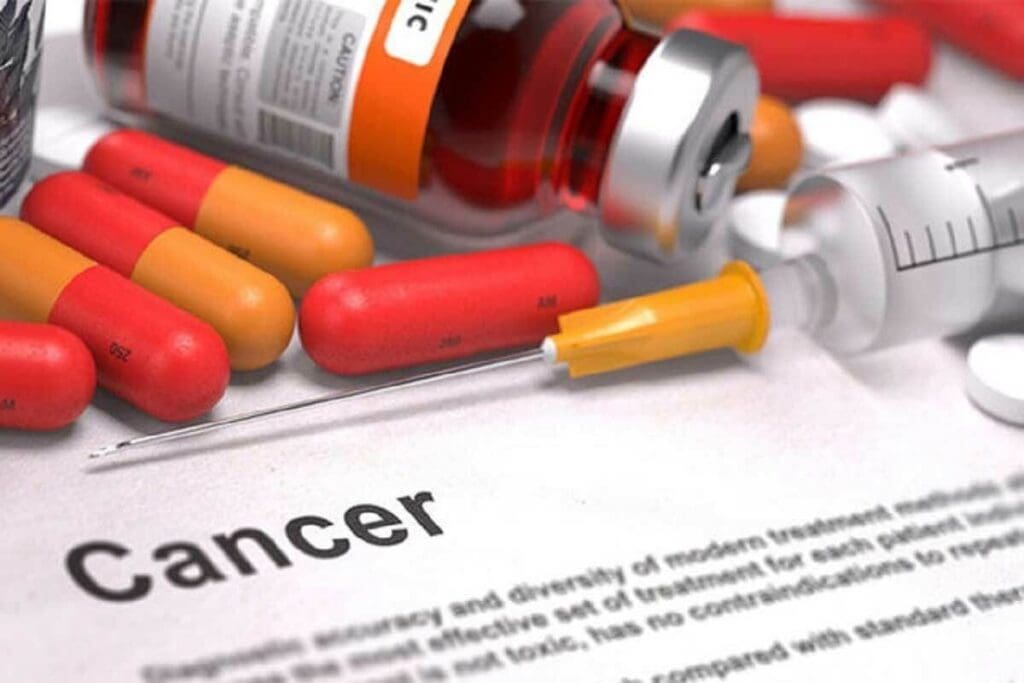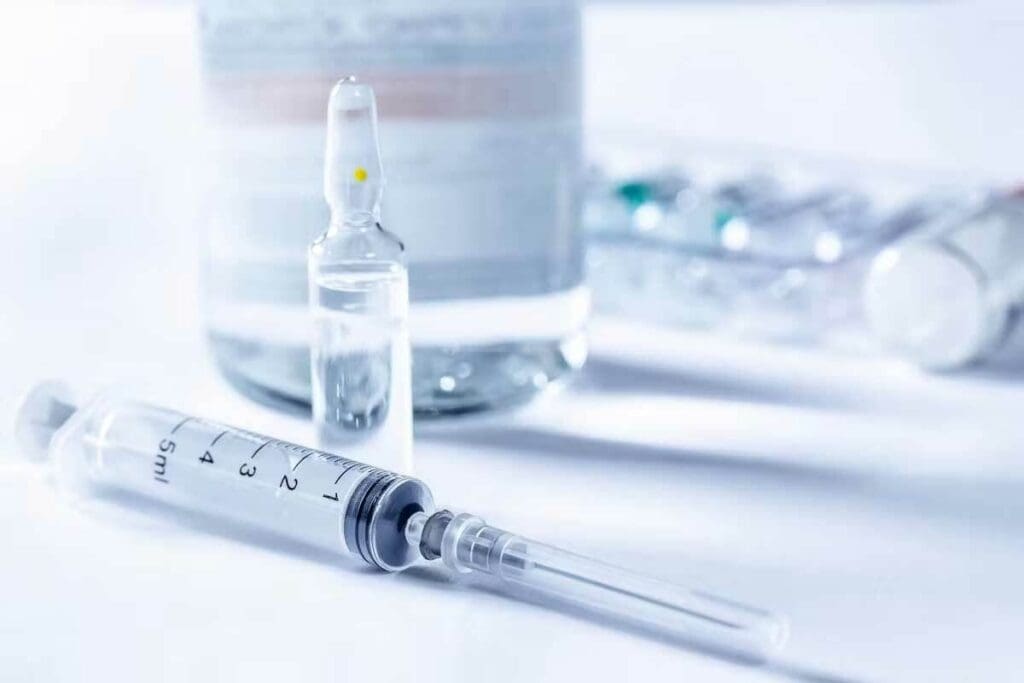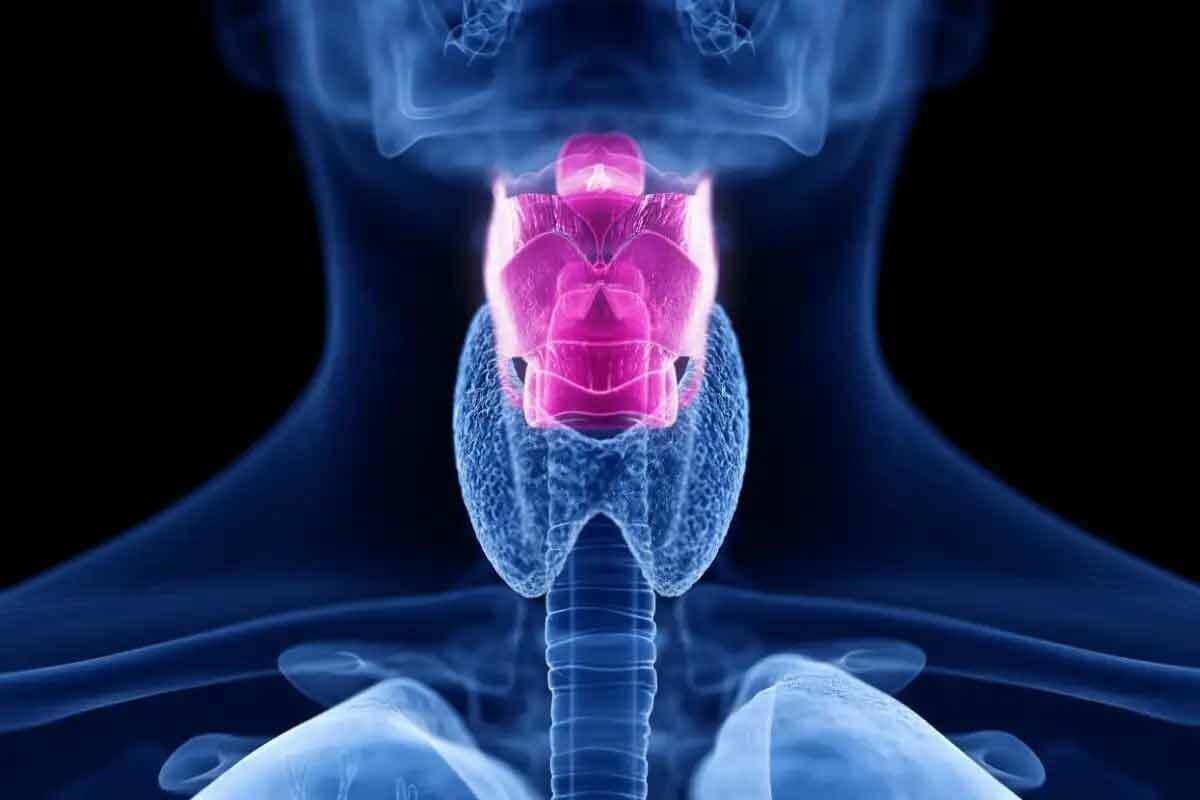Last Updated on November 27, 2025 by Bilal Hasdemir

Cancer treatment has come a long way, with over 100 chemotherapy agents in use today. At Liv Hospital, we focus on personalized care for cancer patients. We use different types of chemotherapy drugs to fight this disease.
Chemotherapy targets cells that grow fast, a sign of cancer. There are six main types of these drugs. Knowing about these categories helps in treating cancer effectively.
Key Takeaways
- Chemotherapy is a key part of cancer treatment, using over 100 agents.
- There are six main classes of chemotherapy drugs to fight cancer.
- It’s important to know about different chemotherapy drugs for effective treatment.
- Liv Hospital offers personalized care, using new protocols and international standards.
- Good cancer treatment needs a full approach, including many chemotherapy drug types.
The Role of Chemotherapy in Cancer Treatment

Chemotherapy is key in fighting cancer, using drugs that target cancer cells. It aims to kill these cells or stop them from growing. Chemotherapy can be used to cure cancer, or to help patients live longer or feel better. The treatment’s goal depends on the cancer type, its stage, and how far it has spread.
How Chemotherapy Targets Cancer Cells
Chemotherapy attacks cells that grow fast, like most cancer cells. It uses different drugs to do this. For example, alkylating agents damage cancer cells’ DNA, stopping them from making copies.
Other drugs, like antimetabolites and plant alkaloids, work in their own ways. They all help fight cancer by targeting its cells.
- Alkylating agents add an alkyl group to DNA, stopping cells from dividing.
- Antimetabolites block DNA and RNA production, needed for cell division.
- Plant alkaloids come from plants and stop cells from dividing.
Development and Evolution of Cancer Chemotherapy
Chemotherapy has grown a lot over time. It started with finding chemicals that affect cell division. Now, we know more about cancer, leading to better treatments.
Alkylating agents are a big part of chemotherapy, helping fight many cancers.
- Using more than one chemotherapy drug at a time has made treatments better.
- Improvements in care have lessened chemotherapy’s side effects.
- Research keeps finding new ways to target cancer cells, making treatments more effective.
Knowing how chemotherapy works helps patients understand their treatment. It keeps getting better, giving hope to people all over the world.
Chemotherapy Drugs: Classification Overview

Chemotherapy drugs are divided into six main categories. Each has its own way of working and is used for different cancers. Knowing about these categories helps in treating cancer better.
The Six Major Categories and Their Distinctions
The six main types of chemotherapy drugs are alkylating agents, antimetabolites, plant alkaloids, anti-tumor antibiotics, topoisomerase inhibitors, and platinum agents. They all target cancer cells in different ways.
Alkylating agents, like cyclophosphamide and busulfan, damage the DNA of cancer cells. This stops them from growing. Antimetabolites, including methotrexate and fluorouracil, block the making of DNA and RNA. These are key for cancer cells to grow.
| Category | Examples | Mechanism of Action |
| Alkylating Agents | Cyclophosphamide, Busulfan | DNA damage |
| Antimetabolites | Methotrexate, Fluorouracil | Inhibit DNA/RNA synthesis |
| Plant Alkaloids | Vincristine, Paclitaxel | Microtubule inhibition |
Factors Influencing Drug Selection in Cancer Treatment
Choosing the right chemotherapy drugs depends on several things. These include the type and stage of cancer, and the patient’s health. We use this information to create a treatment plan that works well and has fewer side effects.
Some cancers respond better to certain drugs. For example, alkylating agents are used for many cancers. Antimetabolites work well against leukemias and some gastrointestinal cancers.
Understanding how chemotherapy drugs are classified helps us make better treatment plans. This is key to fighting different types of cancer effectively.
Alkylating Agents: The Foundation of Cancer Treatment
Alkylating agents are key in fighting cancer. They work by damaging the DNA of cancer cells, stopping them from growing. This is why they’re used to treat many types of cancer.
Mechanism of Action: DNA Damage and Cell Death
These drugs add an alkyl group to cancer cells’ DNA. This makes it hard for the cells to copy their DNA and make RNA. As a result, the cells die. But, these drugs can harm normal cells that grow fast too.
Common Examples: Cyclophosphamide and Busulfan
Cyclophosphamide is used for lymphomas, leukemias, and some solid tumors. Busulfan is mainly for chronic myeloid leukemia and to prepare for bone marrow transplants.
Here’s a quick look at these drugs and their uses:
| Drug Name | Cancer Types Treated | Notable Use |
| Cyclophosphamide | Lymphomas, Leukemias, Solid Tumors | Part of many combination chemotherapy regimens |
| Busulfan | Chronic Myeloid Leukemia | Conditioning for bone marrow transplantation |
Cancer Types Treated with Alkylating Agents
Alkylating agents fight many cancers, like leukemias, lymphomas, and some solid tumors. They’re good at damaging DNA in fast-growing cancer cells.
We keep using alkylating agents in cancer treatment. They’re effective and work on many cancers.
Antimetabolites: Disrupting Cellular Metabolism
Antimetabolites are key drugs in cancer treatment. They mess with how cells work, stopping cancer cells from growing. This is vital in fighting cancer.
Interfering with DNA and RNA Production
These drugs look like the parts of DNA and RNA, but they’re not real. They block the making of new DNA and RNA. This stops cancer cells from copying themselves.
Antimetabolites are used because they target fast-growing cells, like cancer cells. They stop tumors from growing and kill off cancer cells.
Key Examples: Methotrexate and Fluorouracil
Methotrexate and fluorouracil are well-known antimetabolites. Methotrexate treats leukemias, lymphomas, and some solid tumors. Fluorouracil is used for cancers in the gut, like colon cancer.
| Drug | Primary Use | Mechanism |
| Methotrexate | Leukemias, Lymphomas, Solid Tumors | Inhibits Dihydrofolate Reductase |
| Fluorouracil | Gastrointestinal Cancers (e.g., Colorectal Cancer) | Inhibits Thymidylate Synthase |
Effectiveness in Leukemias and GI Cancers
Antimetabolites are very effective against leukemias and cancers in the gut. They mess with the cells’ metabolism, helping patients with tough cancers.
“The introduction of antimetabolites into chemotherapy regimens has been a significant advancement in the treatment of various cancers, providing new hope for patients with previously limited treatment options.”
We keep using antimetabolites because they target cancer cells well. Research is ongoing to make them even better and reduce side effects.
Plant Alkaloids: Natural Derivatives That Block Mitosis
We use plant alkaloids, natural compounds, to stop cancer cell division. These drugs come from plants and help treat many cancers.
Microtubule Inhibition and Mitotic Block
Plant alkaloids stop microtubule formation, key to cell division. They block mitosis, stopping cancer cells from growing. Microtubule inhibition stops cells from dividing, slowing tumor growth.
Notable Examples: Vincristine and Paclitaxel
Vincristine and paclitaxel are key plant alkaloids in chemotherapy. Vincristine comes from the periwinkle plant and fights leukemia and lymphoma. Paclitaxel, from the Pacific yew tree, targets ovarian, breast, and lung cancers.
Applications in Various Cancer Types
Plant alkaloids are used in many cancer treatments. They help with leukemia, lymphoma, and solid tumors like ovarian and breast cancer. Their wide use makes them a key part of many chemotherapy plans.
Anti-tumor Antibiotics: Preventing DNA Replication
We use anti-tumor antibiotics to stop cancer cells from growing. These drugs are key in fighting cancer. They work by getting in the way of DNA replication in cancer cells.
Mechanism of Action
Anti-tumor antibiotics bind to DNA, stopping cancer cells from copying themselves. This action messes up the work of an enzyme called topoisomerase II. Without this enzyme, cancer cells can’t grow and eventually die.
Key Points about Anti-tumor Antibiotics:
- They intercalate DNA, preventing replication.
- They disrupt topoisomerase II function.
- They induce cell death in cancer cells.
Common Drugs
Doxorubicin and bleomycin are two well-known anti-tumor antibiotics. Doxorubicin helps treat many cancers, like breast and bladder cancer. Bleomycin is good for testicular and ovarian cancer, and Hodgkin’s lymphoma.
| Drug | Cancer Types Treated |
| Doxorubicin | Breast cancer, bladder cancer, lymphomas |
| Bleomycin | Testicular cancer, ovarian cancer, Hodgkin’s lymphoma |
Cancer Types Responsive to Anti-tumor Antibiotics
Anti-tumor antibiotics work well against many cancers. Doxorubicin is key in treating breast cancer and lymphoma. Bleomycin is best for testicular and Hodgkin’s lymphoma. The right drug depends on the cancer type, stage, and the patient’s health.
As we keep improving cancer treatment, understanding anti-tumor antibiotics is key. These drugs have greatly helped patients and are a big part of chemotherapy.
“The development of anti-tumor antibiotics has been a significant advancement in the field of oncology, providing effective treatment options for various types of cancer.”
Topoisomerase Inhibitors: Altering DNA Structure
Topoisomerase inhibitors are key in fighting cancer. They change DNA to stop cancer cells from growing. These drugs target enzymes that help DNA copy itself and fix mistakes.
Interfering with DNA Repair Mechanisms
These inhibitors block topoisomerase I and II enzymes. These enzymes help DNA copy itself and fix errors. By stopping them, the drugs cause DNA damage. This leads to cancer cells dying or stopping their growth.
Blocking DNA repair is complex. Topoisomerase I inhibitors, like irinotecan, stop DNA from being fixed. Topoisomerase II inhibitors, such as etoposide, cause DNA breaks.
Key Examples: Etoposide and Irinotecan
Etoposide and irinotecan are well-known topoisomerase inhibitors. Etoposide is used for testicular, lung, and lymphoma cancers. Irinotecan is mainly for colorectal cancer.
- Etoposide blocks topoisomerase II.
- Irinotecan stops topoisomerase I.
- Both are effective against many cancers.
Clinical Applications and Cancer Types
Topoisomerase inhibitors are used for many cancers. They treat:
- Lung cancer
- Testicular cancer
- Colorectal cancer
- Lymphomas
They are often paired with other drugs to work better. The right inhibitor depends on the cancer, patient health, and past treatments.
Platinum Agents: Creating DNA Crosslinks
Platinum agents are special in the world of chemotherapy. They create DNA crosslinks, which are key in fighting cancer. This makes them a big part of cancer treatment.
Mechanism of Action: DNA Damage Through Crosslinking
Platinum agents form platinum-DNA crosslinks. This damages the DNA of cancer cells, leading to cell death. It’s a key part of how they work in chemotherapy.
“The formation of DNA crosslinks is a critical step in the cytotoxic action of platinum agents,” showing their vital role in fighting cancer.
Major Drugs: Cisplatin and Carboplatin
Cisplatin and carboplatin are the top choices for platinum agents. Cisplatin is great for testicular, ovarian, and bladder cancers. Carboplatin is often picked for ovarian, lung, and head and neck cancers.
Effectiveness in Specific Cancer Types
Platinum agents are very effective against certain cancers. For example, cisplatin is a key treatment for testicular cancer, boosting survival chances. Carboplatin is a go-to for ovarian cancer, often paired with other treatments.
- Testicular cancer: Cisplatin-based regimens have high cure rates.
- Ovarian cancer: Both cisplatin and carboplatin are used, depending on the stage and patient factors.
- Lung cancer: Carboplatin is commonly used, often in combination with other agents.
Combination Chemotherapy Approaches
Combination chemotherapy is key in fighting many cancers. It uses several drugs to hit cancer cells hard. This makes it harder for cancer to resist treatment and helps patients more.
Rationale for Multi-Drug Regimens
Using many drugs at once is smart. It attacks cancer in different ways. This makes treatment stronger and helps beat drug resistance.
Each drug works differently. Some stop DNA from copying, others stop cells from dividing. Together, they work better than alone.
Common Combination Protocols
Many chemotherapy mixes are used in hospitals. They match the cancer type and patient needs.
- AC-T regimen: This mix is for breast cancer. It includes Adriamycin, cyclophosphamide, and Taxotere.
- R-CHOP: For non-Hodgkin lymphoma, it’s a mix of rituximab, cyclophosphamide, doxorubicin, vincristine, and prednisone.
Balancing Efficacy and Toxicity
Combination therapy is good, but it can be tough on the body. Finding the right mix is key.
Oncologists pick the best drugs and doses carefully. They watch patients closely to manage side effects. This way, they can adjust treatment as needed.
Administration Methods and Treatment Schedules
At Liv Hospital, we use the latest in chemotherapy administration. Our methods follow global best practices. This ensures top care for those fighting cancer.
Intravenous, Oral, and Other Delivery Routes
Chemotherapy can be given in different ways. The choice depends on the cancer type, treatment plan, and patient health. Here are the main methods:
- Intravenous (IV) chemotherapy: Given straight into a vein, it’s the most common method.
- Oral chemotherapy: Taken by mouth, it’s easy to take at home.
- Topical chemotherapy: Applied to the skin or mucous membranes, it’s used for some skin cancers.
Treatment Cycles and Dosing Strategies
Treatment plans vary based on the chemotherapy and how the patient responds. Treatment cycles help the body recover between doses. This makes the treatment more effective and reduces side effects.
- Neoadjuvant chemotherapy: Given before the main treatment to shrink tumors.
- Adjuvant chemotherapy: Given after the main treatment to kill any remaining cancer cells.
- Palliative chemotherapy: Focuses on easing symptoms and improving life quality in advanced cancer.
Monitoring Response and Adjusting Therapy
It’s key to watch how a patient reacts to chemotherapy. We adjust treatment plans to get the best results. We use clinical checks, imaging, and lab tests to see how well the cancer is responding.
By watching patient response and making changes, we improve treatment results. This also reduces bad effects, making care better overall.
Managing Side Effects and Supportive Care
Managing side effects is key in cancer care with chemotherapy. As we keep using chemotherapy, it’s vital to understand and lessen its side effects. This helps improve patient outcomes and quality of life.
Common Side Effects by Drug Class
Chemotherapy drugs have different side effects. For example, alkylating agents like cyclophosphamide can cause hair loss, nausea, and more infections. Antimetabolites such as methotrexate can lead to mouth sores and stomach problems. Knowing these side effects helps manage them better.
- Hair loss and alopecia
- Nausea and vomiting
- Increased risk of infections
- Mucositis and gastrointestinal disturbances
Preventive Strategies and Interventions
Preventing or reducing side effects is a big part of supportive care. We use many strategies, like antiemetic meds for nausea, growth factors for blood cells, and protective agents for organs. For instance, dexrazoxane helps prevent heart damage from anthracyclines.
Quality of Life Considerations
Keeping the quality of life high is essential for patients on chemotherapy. It’s not just about physical side effects but also mental and emotional well-being. Supportive care, like counseling, nutrition, and pain management, is key to better patient well-being and sticking to treatment.
By focusing on treating cancer and managing side effects, we can greatly improve the chemotherapy experience for patients.
Conclusion: Advances and Future Directions in Chemotherapy
As we tackle cancer treatment, chemotherapy plays a key role. New research is bringing us better drugs and ways to use them. This means better results and a better life for those fighting cancer.
There are many types of chemotherapy drugs, each working in its own way. They help fight different cancers. Looking ahead, we’ll see more treatments that are tailored to each patient’s needs.
New ways of combining drugs and how we give them are making treatments better. This means less harm and more success in fighting cancer. It’s a big step forward in helping patients.
With ongoing research, we’ll soon have even more options to fight cancer. By keeping up with these advances, we can help more people win their battle against cancer.
FAQ
What are the six major categories of chemotherapy drugs?
Chemotherapy drugs are divided into six main types. These are alkylating agents, antimetabolites, plant alkaloids, anti-tumor antibiotics, topoisomerase inhibitors, and platinum agents. Each type works differently to target cancer cells.
How do alkylating agents work in cancer treatment?
Alkylating agents damage the DNA of cancer cells. This stops them from growing and eventually kills them. Drugs like cyclophosphamide and busulfan are examples.
What is the role of antimetabolites in chemotherapy?
Antimetabolites disrupt cell processes, like DNA and RNA synthesis. This stops cancer cells from growing. Methotrexate and fluorouracil are examples.
How do plant alkaloids function as chemotherapy drugs?
Plant alkaloids stop cells from dividing by blocking microtubule formation. This is key for cell division. Vincristine and paclitaxel are used to treat many cancers.
What is the mechanism of action of anti-tumor antibiotics?
Anti-tumor antibiotics bind to DNA, stopping cancer cells from replicating. Doxorubicin and bleomycin are common examples.
How do topoisomerase inhibitors work in cancer treatment?
Topoisomerase inhibitors change DNA structure, affecting DNA repair. Etoposide and irinotecan are used to treat various cancers.
What is the role of platinum agents in chemotherapy?
Platinum agents create DNA crosslinks, damaging cancer cells’ DNA. This stops them from replicating. Cisplatin and carboplatin are used to treat many cancers.
What is combination chemotherapy, and why is it used?
Combination chemotherapy uses several drugs to treat cancer. It aims to be more effective, overcome resistance, and reduce side effects.
How is chemotherapy administered, and what are the treatment schedules like?
Chemotherapy can be given in different ways, like IV, oral, or topical. Treatment plans vary based on the cancer type, the drugs used, and how the patient responds.
How are side effects managed in chemotherapy?
Managing side effects is key in cancer treatment. Different drugs cause different side effects. Understanding these helps in providing better care.
What are the different types of chemotherapy drugs used for various cancers?
Different drugs are used for different cancers, like leukemias, lymphomas, and gastrointestinal cancers. The choice depends on the cancer type, stage, and patient health.
How does chemotherapy drug classification impact treatment decisions?
Knowing how chemotherapy drugs are classified is important. It helps doctors choose the best treatment for each patient based on their cancer and health.
References
Amjad, M. T., Zulfiqar, M., Imran, M., et al. (2023). Cancer Chemotherapy – StatPearls. StatPearls Publishing. https://www.ncbi.nlm.nih.gov/books/NBK564367/






